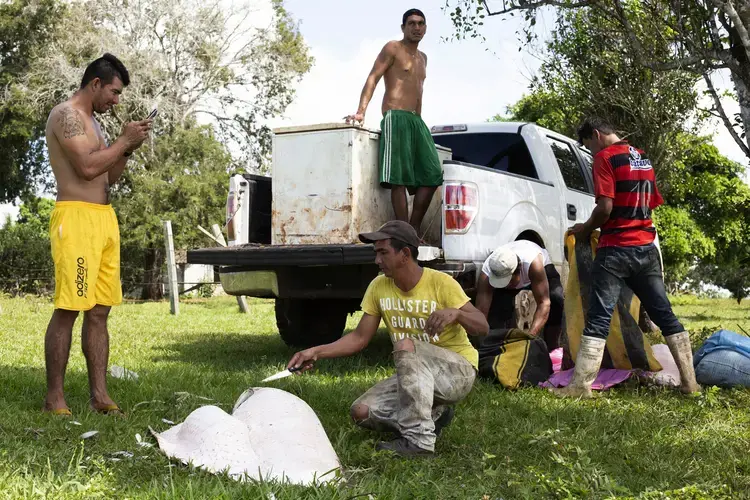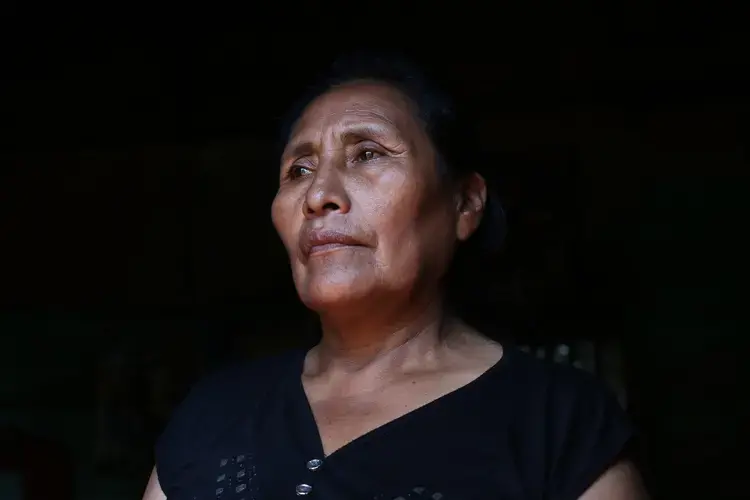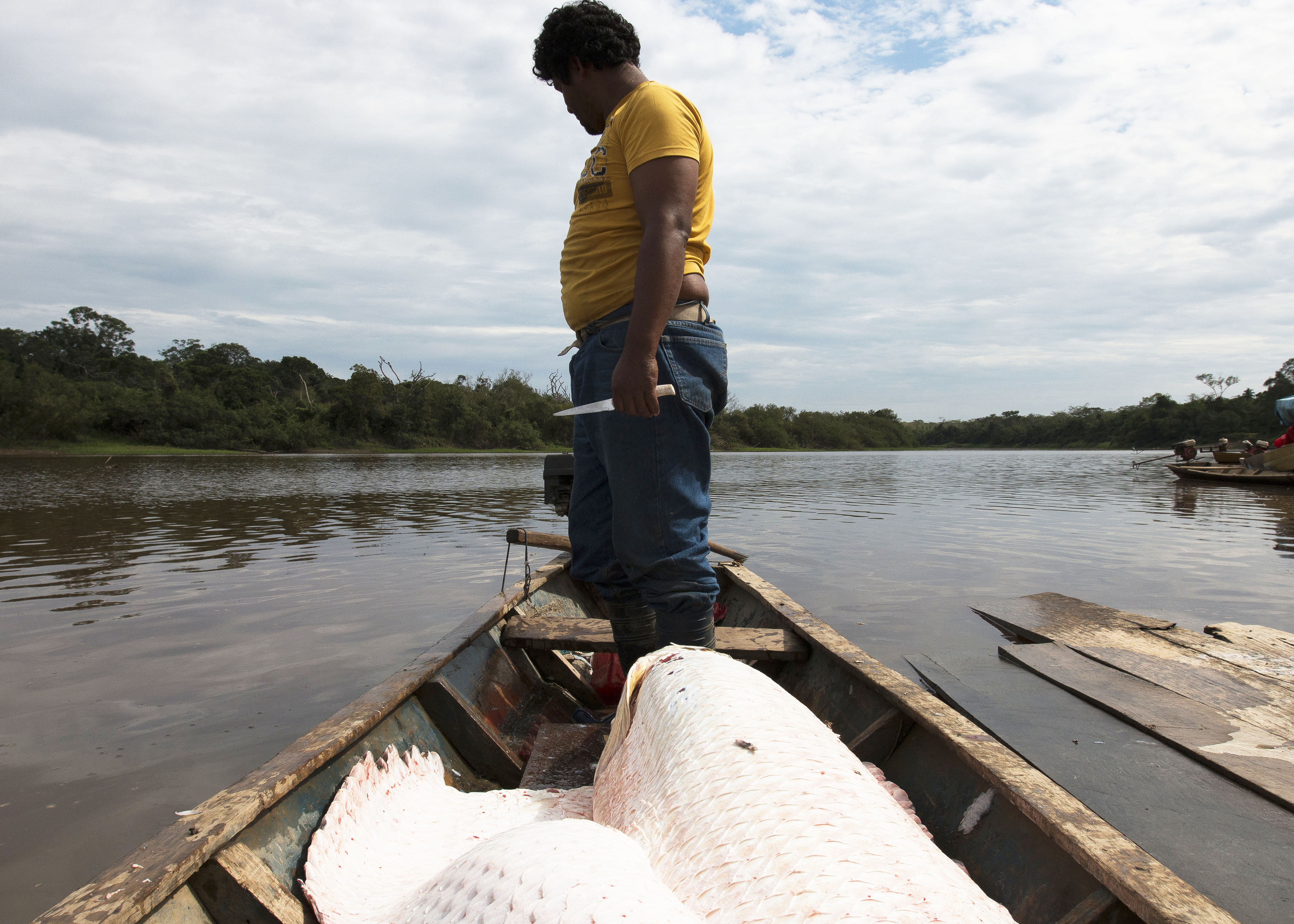No one in the Bolivian village of Cachuela Mamore saw the flood coming.
The Mamore River, which curves along Bolivia’s wildly diverse, 2,100-mile border with Brazil, always rises during the months-long Amazonian rainy season. But the flood in 2014 was different.
Within weeks, the river had reached villagers’ doorsteps, and all 38 families—fruit farmers and fishermen, mostly—fled inland.
For the next five months they returned to their waterlogged citrus, banana and avocado orchards, which had once been their primary source of income, and plucked fruit from the low branches to scratch out a living. When the water finally receded, the fruit trees collapsed, and the native fish in the river’s stagnant waters disappeared.
Now, the families of Cachuela Mamore still live in the makeshift huts of wood, plastic tarps and corrugated metal that they cobbled together after the floods, living alongside the dirt road that connects the village to Guayaramerin, the nearest major town.
The villagers have also come to believe that it was more than just seasonal rains that caused the Mamore to crest its banks. They blame a pair of dams built downstream and worry that two more dams planned in the region could undo their lives and traditions.

“We still haven’t recuperated,” says Joaquin Montero Mendes, a 42-year-old farmer and fisherman, his rubber boots muddy from working in the new orchard that he and the other villagers planted after the flood. “What happened was a direct result of the dam.”
The dam in question is the Jirau Hydroelectric Plant, 115 miles north of Cachuela Mamore in neighboring Brazil on the Madeira River, one of the Amazon’s largest tributaries. The second in a planned four-dam complex, Jirau, like its predecessor, the Santo Antonio dam just outside the Brazilian city of Porto Velho, was developed to feed power to the fast-growing cities of southeastern Brazil.
Together, the two completed dams, which cost almost $15 billion to build, already produce enough electricity to power the city of Rio de Janeiro for nearly a year.
If the second two dams are built — one straddling the Brazil-Bolivia border 25 miles downstream from Cachuela Mamore, the other within Bolivian territory on the Beni River — the complex’s capacity will increase by at least 30%. Brazil and Bolivia will share the costs on the future projects, though the price tag is still undetermined.
When the first two dams were built, people in Cachuela Mamore and elsewhere along the Bolivian border were not invited to be part of an assessment of the potential risks to those who live in the area. Now, they are demanding that their voices be heard.
“They say that this is development for the Amazon,” says Lidia Antty, an activist and community organizer whose home in Guayaramerin was flooded in 2014. “But it’s development with death.”
The Jirau and Santo Antonio dams were approved by Brazil in 2007, and construction moved forward despite objections from Bolivia, which said it was never shown any of the relevant studies for the project. When Santo Antonio, the first of the dams to go operational, opened in 2012, the city of Porto Velho on the Brazilian side of the border experienced devastating flooding. Even then, Montero says, word never reached the farmers and fishermen in Cachuela Mamore that there might be problems to come.
“There was no information here at all,” Montero said.
Though experts generally blame the 2014 floods that swamped Cachuela Mamore on unusually heavy rains in the Andes, which drain into the Amazon basin, others say the dams were at least partially responsible by slowing and interrupting the natural flow of the rivers and tributaries in the region.
Carolina R.C. Doria, a biologist at Brazil’s Federal University of Rondonia, said in an email that the dams contributed to the problem by holding back water until the rivers began to crest. Villagers in Bolivia’s Amazonian borderlands agree that, before the dam was built, they’d never seen a comparable disaster.
As part of the development, the consortium of companies building and operating the dams launched dozens of programs for affected Brazilian communities, including resettlement, cash payments and, in the case of fishermen in Guajara-Mirim, the Brazilian town across the river from Guayaramerin, a management plan for fishing the invasive paiche that had moved into the local waters when the native fish vanished.
But on the Bolivian side of the border, villages like Cachuela Mamore have received no such support.
In Bolivia, one of the continent’s poorest nations, project supporters see a broad opportunity to turn an Amazonian resource — water — into an income-producing asset. But for those living along the Amazon’s remote tributaries, the feeling is that their lives are being overlooked in the rush to pump power to Brazil’s mega-cities.
In the village of San Lorenzo, a day’s trip upriver from Guayaramerin, 32-year-old fisherman Samuel Surubi lost 24 acres of banana plantation in the 2014 flooding. “The flood came and left the land just as it was when it fell from heaven,” Surubi says. He and others worry that when the next dam goes up, the rainy seasons will become even more devastating.
Doria, the biologist, said villagers such as those in Cachuela Mamore are at a huge disadvantage trying to fight the project.
“These communities are isolated, uninformed and disorganized to fight for their rights or even participate in decision-making forums,” she said.
In the last four years, Antty has helped organize a grass-roots campaign connecting rural communities in Bolivia with better-organized activist groups in Brazil and with scientists in Bolivia and abroad. Her goal: to halt the construction of the final two dams.
“The people who will be affected don’t want these projects,” she says. “The people who come from elsewhere are in favor of it because they can leave when the river fills.”

Lidia Bani Lopez, 58, a lifelong resident of Cachuela Mamore, said, “We’re not against progress, but we are against this kind of construction that will do away with our Amazon.”
Federico Cortez Morai, a native of Cachuela Mamore who worked as a construction contractor on the Jirau dam from 2013 to 2016, said he’s hopeful his community will be better equipped to stand up for its rights than it was in the years prior to the Jirau and Santo Antonio dams.
Cortez recalled his years at Jirau and the weekly meetings where he and other workers would raise concerns about flooding. The engineers, he says, would tell them not to worry.
“This calmed us down because we believed that these people, through their studies, could predict and, to some extent, mitigate the consequences. We believed them,” Cortez says now. “I worked three years on the dam and I earned well, but it wasn’t worth anything, because while I was working my home was flooding.”
At the inland settlement where Cortez’s family and their neighbors in Cachuela Mamore relocated, the orange trees planted after the 2014 flooding produced their first fruit this past May. Paiche, which people here find flavorless compared with the native species they’ve consumed for generations, is now the only fish they’re able to catch with any regularity. Electrical wires, installed by a U.S. nongovernmental organization but never connected to the grid, dangle uselessly over their ramshackle houses.
Even as the dams funnel electricity to Brazilian cities 1,500 miles away, the lights still have not come on in Cachuela Mamore.
“They call it progress—always progress,” Cortez says, “but at the end of the day, progress is always just another problem.”
Snyder is a special correspondent.









